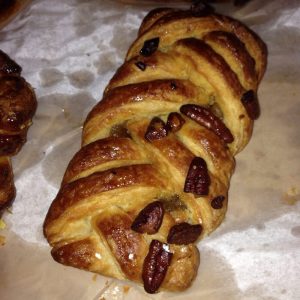This contest started on 11/12/16. This contest has a winner!

* Win 2-Tickets To: Eddie Money & Starship Featuring Mickey Thomas.
Way back on 9/19/16 Jeff Eats “did” a contest: Win 2-Tickets To: Eddie Money & Starship Featuring Mickey Thomas. Already got a winner for that one!
Jeff Eats just got 2- more tickets to give-away…
Real simple game, the first 15 “comments” posted-will be entered in a “blind-pick” with the winner receiving 2-tickets to Eddie Money & Starship Featuring Mickey Thomas’ January 14, 2017 Pompano Beach Amphitheater concert! One “comment” per day- per IP Address!
For you guys who want to cover all bases, you can catch tickets at pompanobeacharts.org and ticketmaster.com.
Posted on September 7th, 2016
* Pre Sale- Eddie Money & Starship.
Just announced!
Jeff Eats and Mrs. Jeff Eats are really looking forward to seeing- this one!
Eddie Money & Starship Featuring Mickey Thomas
Two Headliners, One Night Only
Saturday, January 14, 2017 (8pm)
Pompano Beach Amphitheater
Special Presale Offer*
Now Through Thursday, 9/8 at 10pm
Ticketmaster.com & Enter Code: paradise
Saturday, January 14, 2017
Doors Open 7:00pm, Show Starts 8:00pm
Tickets: $25-$80
Service fees and credit card charges may apply
The Pompano Beach Amp is proud to announce their first concert of 2017. Eddie Money and Starship featuring Mickey Thomas will kick off the New Year with a rockin’ double headliner show. The concert will have fans singing all night long as both Eddie and Mickey crank out decades of hits.
Eddie Money burst onto the scene with his double-platinum album on Columbia Records in 1977 spawning the two hits “Baby Hold On” and “Two Tickets to Paradise.” Legendary rock impresario Bill Graham raved, “Eddie has it all…not only can he sing, write, and play; he’s a natural performer.”
Over the course of his storied career, Money sold over 28 million records and amassed over 20 hits with overwhelming success at both Pop and Rock radio including “Shakin’,” “I Think I’m in Love,” “I Wanna Go Back,” “We Should Be Sleeping,” “Walk On Water,” “I’ll Get By,” and his legendary hit with Ronnie Spector, “Take Me Home Tonight”. Money’s songs have appeared in dozens of movies including, television shows and hit video games including “Mall Cop”, the infamous Geico commercial, “Grand Theft Auto”, and “Guitar Hero”.
Mickey Thomas is the owner of the soaring voice that propelled Starship through the decades of the 80’s and 90’s. With his soulful and compelling vocals, Mickey has established himself as one of rock music’s most recognizable stars. Mickey made his mark in 1976 as lead vocalist on the mega-hit “Fooled Around and Fell in Love” with The Elvin Bishop Band.
In 1979, Mickey’s joined Jefferson Starship and his powerful vocals brought a new wave of success. The group was renamed Starship and had an amazing string of hits including “No Way Out,” “We Built This City,” “Sara,” and an Oscar nomination for the #1 hit “Nothing Gonna Stop Us Now,” from the movie Mannequin. Other top hits included “Find Your Way Back,” “Stranger,” “Laying It On the Line” and “It’s Not Over Till It’s Over” which became Major League Baseball’s theme in 1987. Moreover, every Starship album released since 1979 has gone Gold, Platinum, or Multi-Platinum. Mickey’s stellar voice and video charisma on Starship’s video classics have become staples on MTV and VH1. Material covered in Starship’s live performance ranges from Mickey’s tenure with The Elvin Bishop Band and Starship, as well as songs from his two solo albums.
The Pompano Beach Amp is proud to announce their first concert of 2017. Eddie Money and Starship featuring Mickey Thomas will kick off the New Year with a rockin’ double headliner show. The concert will have fans singing all night long as both Eddie and Mickey crank out decades of hits.
Eddie Money burst onto the scene with his double-platinum album on Columbia Records in 1977 spawning the two hits “Baby Hold On” and “Two Tickets to Paradise.” Legendary rock impresario Bill Graham raved, “Eddie has it all…not only can he sing, write, and play; he’s a natural performer.”
Over the course of his storied career, Money sold over 28 million records and amassed over 20 hits with overwhelming success at both Pop and Rock radio including “Shakin’,” “I Think I’m in Love,” “I Wanna Go Back,” “We Should Be Sleeping,” “Walk On Water,” “I’ll Get By,” and his legendary hit with Ronnie Spector, “Take Me Home Tonight”. Money’s songs have appeared in dozens of movies including, television shows and hit video games including “Mall Cop”, the infamous Geico commercial, “Grand Theft Auto”, and “Guitar Hero”.
Mickey Thomas is the owner of the soaring voice that propelled Starship through the decades of the 80’s and 90’s. With his soulful and compelling vocals, Mickey has established himself as one of rock music’s most recognizable stars. Mickey made his mark in 1976 as lead vocalist on the mega-hit “Fooled Around and Fell in Love” with The Elvin Bishop Band.
In 1979, Mickey’s joined Jefferson Starship and his powerful vocals brought a new wave of success. The group was renamed Starship and had an amazing string of hits including “No Way Out,” “We Built This City,” “Sara,” and an Oscar nomination for the #1 hit “Nothing Gonna Stop Us Now,” from the movie Mannequin. Other top hits included “Find Your Way Back,” “Stranger,” “Laying It On the Line” and “It’s Not Over Till It’s Over” which became Major League Baseball’s theme in 1987. Moreover, every Starship album released since 1979 has gone Gold, Platinum, or Multi-Platinum. Mickey’s stellar voice and video charisma on Starship’s video classics have become staples on MTV and VH1. Material covered in Starship’s live performance ranges from Mickey’s tenure with The Elvin Bishop Band and Starship, as well as songs from his two solo albums.
Pompano Beach Amphitheater
1806 NE 6th St – Pompano Beach
Date/Time
Date(s) – 01/14/2017
8:00 pm – 11:00 pm


















































